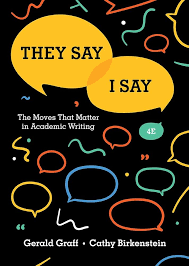📘 They Say, I Say: A Comprehensive Guide to Research and Academic Writing
Integrating the Minto Pyramid Principle, Mind Mapping, and Zettelkasten Method for Scholarly Success
Prepared by: IAS-Research.com & KeenComputer.com
Date: April 2025
Executive Summary
Academic and research writing can be overwhelming—balancing argumentation, structure, evidence, and clarity. This white paper is a comprehensive guide to writing impactful research papers and theses using a powerful triad:
- “They Say, I Say” for argumentation and rhetorical clarity
- Minto Pyramid Principle for logical structure
- Zettelkasten and Mind Mapping for note-taking and ideation
By using these methods, researchers can build academic works that are coherent, persuasive, and innovative. IAS-Research.com and KeenComputer.com provide expert support throughout this process.
Table of Contents
- Introduction
- The “They Say, I Say” Approach
- The Minto Pyramid Principle: Structuring Logic
- Mind Mapping for Research Clarity
- Zettelkasten Method: A Personal Knowledge System
- The Research Report Writing Process
- Techniques for Thesis and Dissertation Writing
- Writing Style, Voice, and Academic Tone
- Avoiding Pitfalls: Ethics and Plagiarism
- Tools and Technologies for Writing Success
- Support from IAS-Research.com and KeenComputer.com
- Conclusion
- References
1. Introduction
Research is about more than answering a question—it’s about entering a conversation. This guide combines rhetorical techniques and cognitive tools to help you organize, argue, and write with impact.
It answers key challenges:
- How do I structure my thesis logically?
- How do I enter the academic conversation?
- How do I retain and organize research findings?
2. The “They Say, I Say” Approach
This model encourages writers to respond to scholarly voices with their own arguments.
Components:
- They Say: Acknowledge the views, debates, and data already established
- I Say: Your thesis, insights, or rebuttal
- So What? / Who Cares?: Why your work matters
Example:
“They say online learning weakens engagement. I say adaptive platforms increase participation by tailoring experiences. This matters as universities seek scalable learning solutions.”
3. The Minto Pyramid Principle: Structuring Logic
Structure your writing in a top-down pyramid:
- Start with the Main Idea
- Group Arguments Logically
- Support with Data, Examples, Citations
|
Pyramid Level |
Academic Writing Equivalent |
|---|---|
|
Thesis/Insight |
Introduction or Abstract |
|
Key Arguments |
Literature Review, Discussion |
|
Evidence |
Data, Results, Citations |
This prevents rambling and strengthens flow.
4. Mind Mapping for Research Clarity
Mind maps help brainstorm, organize, and visualize themes and connections.
Benefits:
- See relationships between ideas
- Generate subtopics for chapters or sections
- Clarify complex concepts
Example:
For a thesis on “AI in Education,” a mind map could include branches such as:
- Personalized Learning
- Teacher Support
- Data Privacy
- Bias in Algorithms
🧠 Here’s a sample mind map outline:
AI in Education | --------------------------------------------- | | | Personalized Teacher Support Data Ethics Learning (Tools) (Bias) | | | Case Studies Automation Legal Frameworks
5. Zettelkasten Method: A Personal Knowledge System
Zettelkasten (slip-box) is a system of organizing notes by linking related ideas. Invented by sociologist Niklas Luhmann, it boosts academic creativity.
Key Concepts:
- Atomic Notes: Each idea on a separate slip or file
- Unique ID: Each note gets a number or link
- Linking: Notes refer to related ones (like a neural network)
Example:
- Note 001: “AI adapts to learner styles” → link to 002 (study on AI engagement)
- Note 002: “Stanford 2023: AI tutors increase test scores”
Tools:
- Analog (index cards)
- Digital (Obsidian, Zettlr, Roam Research, Notion)
6. The Research Report Writing Process
Step-by-Step:
- Topic Selection
- Literature Review (They Say)
- Thesis Statement (I Say)
- Mind Mapping Key Ideas
- Methodology and Data Collection
- Analysis and Argumentation (Use Minto Structure)
- Zettelkasten for Note Synthesis
- Drafting and Revising
- Citations and Formatting
- Final Proof and Submission
7. Techniques for Thesis and Dissertation Writing
- Outline with Minto Pyramids
- Draft chapter summaries using Zettelkasten links
- Create thematic mind maps for each major section
- Use “They Say / I Say” phrases to maintain argument clarity
8. Writing Style, Voice, and Academic Tone
- Use active voice: “This study finds…”
- Avoid jargon unless your audience is expert
- Use transitional phrases: However, Furthermore, In contrast
- Follow citation style guidelines (APA, MLA, IEEE, etc.)
9. Avoiding Pitfalls: Ethics and Plagiarism
- Cite everything that’s not your own idea
- Use plagiarism detection tools (Turnitin, Grammarly)
- Be transparent about limitations
- Keep a research log of all sources and ideas
10. Tools and Technologies for Writing Success
|
Task |
Tools |
|---|---|
|
Writing & Editing |
MS Word, Google Docs, Scrivener |
|
Mind Mapping |
XMind, MindMeister, FreeMind |
|
Zettelkasten System |
Obsidian, Zettlr, Notion |
|
Reference Management |
Zotero, Mendeley, EndNote |
|
Style & Grammar |
Grammarly, Hemingway Editor |
11. Support from IAS-Research.com and KeenComputer.com
IAS-Research.com
- Research mentoring
- Zettelkasten training
- Literature reviews & synthesis
- Academic editing
KeenComputer.com
- Technical writing for STEM research
- Data analysis & visualization
- AI/ML documentation
- Publishing support for web and PDF
12. Conclusion
Great academic writing is built through:
- Conversations with prior work (“They Say, I Say”)
- Logical structure (Minto Principle)
- Creative synthesis (Mind Maps & Zettelkasten)
Using these frameworks transforms academic writing into a rigorous, efficient, and intellectually rewarding process.
13. References
- Graff, G., & Birkenstein, C. They Say / I Say
- Minto, B. The Pyramid Principle
- Ahrens, S. How to Take Smart Notes (Zettelkasten method)
- Booth, W. C., Colomb, G. G., & Williams, J. M. The Craft of Research
- MindMeister, Obsidian.md, Zotero, IAS-Research.com, KeenComputer.com
Would you like a visual mind map image included or a template notebook (Zettelkasten-style) for Obsidian/Notion? I can also generate a downloadable PDF version of the white paper.



